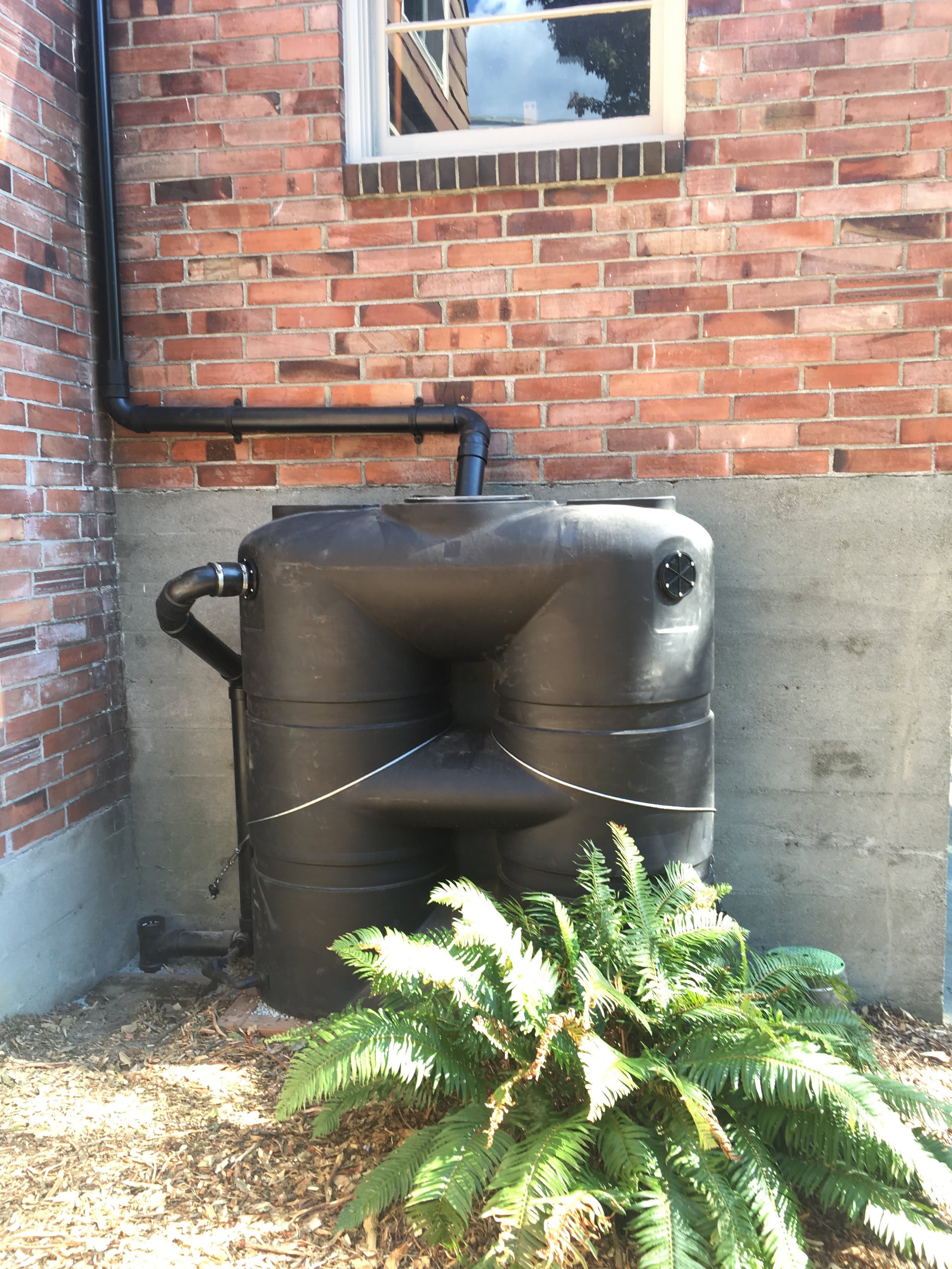Modern Northwest Rainwise Rebated Rain Garden
Six Reasons To Get a Landscape Design
A well-designed landscape is more than just a beautiful outdoor space. It serves as a sanctuary, a place to connect with nature, and an extension of your home. Whether you have a small garden or a sprawling yard, investing in a professional landscaping design can bring a multitude of benefits to your property. In this article, we will explore the numerous advantages that landscaping design offers and why it is worth considering for homeowners.
Aesthetically Pleasing: One of the primary benefits of landscaping design is the creation of an aesthetically pleasing outdoor haven. Professional landscape designers possess an artistic eye and expertise in selecting the right combination of plants, trees, shrubs, and hardscapes to create a harmonious and visually stunning environment. With their knowledge of color schemes, textures, and focal points, they can transform your outdoor space into a living masterpiece that enhances the overall appeal of your property.
Increased Property Value: A well-designed landscape can significantly enhance the value of your property. Curb appeal plays a vital role in creating a favorable first impression for potential buyers. A thoughtfully designed and maintained landscape can be a major selling point, setting your property apart from others. Studies have shown that well-executed landscaping design can yield a return on investment of up to 150%, making it a worthwhile investment in your property's long-term value.
Environmental Benefits: Landscaping design offers a range of environmental benefits. Thoughtful plant selection can provide shade, reducing the need for excessive energy consumption in cooling your home during hot summers. Properly placed trees and shrubs act as windbreaks, helping to shield your property from harsh winds and lowering heating costs during colder months. Furthermore, a well-designed landscape helps to prevent soil erosion, filter pollutants, and promote biodiversity, creating a healthier and more sustainable ecosystem.
Functional Outdoor Spaces: A landscaping design optimizes the functionality of your outdoor space. Professional designers consider the layout, flow, and purpose of different areas, ensuring that each element serves a specific function. Whether it's creating designated seating areas, installing pathways, or incorporating outdoor structures, they tailor the landscape to your needs and lifestyle. From entertaining guests to relaxation or outdoor dining, a well-designed landscape provides functional spaces that cater to your unique requirements.
Personalized Retreat and Well-being: A thoughtfully designed landscape can become your personal retreat, promoting relaxation and well-being. Incorporating elements like water features, meditation areas, or private garden nooks creates a serene and calming environment. Being surrounded by nature has been shown to reduce stress, boost mood, and enhance overall mental well-being. With a landscaping design, you can create an outdoor sanctuary that allows you to unwind, recharge, and enjoy the therapeutic benefits of nature.
Low-Maintenance Solutions: Contrary to popular belief, a landscaping design can be tailored to fit your desired level of maintenance. Professional designers can create low-maintenance landscapes by selecting native and drought-resistant plants, incorporating efficient irrigation systems, and utilizing mulch or ground covers to reduce weed growth. This ensures that your outdoor space remains beautiful and manageable without requiring excessive time and effort.
Investing in a professional landscaping design offers a multitude of benefits that extend far beyond mere aesthetics. From increased property value and environmental sustainability to functional outdoor spaces and personal well-being, the advantages are diverse and impactful. By working with a skilled landscape designer, you can unlock the full potential of your outdoor space, creating a beautiful and harmonious environment that enhances your quality of life and provides a welcoming sanctuary for years to come.
The Difference Between Arbors, Trellises, and Pergolas
In this brief article, we will shed light on the distinctions between arbors, trellises, and pergolas, helping you make informed decisions to enhance your garden.
Arbors: Arbors are small, arch-shaped structures typically used as entrances or focal points in gardens. They often feature an open framework made of wood or metal and are designed to support climbing plants. Arbors offer a touch of elegance and serve as gateways, guiding visitors into different sections of the garden. With their arched roofs, they create a sense of enclosure and can add vertical interest to your landscape. Arbors are ideal for framing a walkway, providing a charming focal point, or creating a romantic setting.
Trellises: Trellises are versatile structures that provide support for climbing plants. They consist of an open framework made of wood, metal, or other materials, forming a grid or lattice pattern. Unlike arbors, trellises do not have roofs or arches. They are designed to encourage plants to grow vertically, offering a decorative and functional solution. Trellises can be freestanding or attached to walls, fences, or larger structures. They are excellent for creating privacy screens, dividing spaces, or adding visual interest to blank walls. Trellises come in various sizes, shapes, and materials, allowing for customization to suit your garden style.
Pergolas: Pergolas are larger structures that feature a framework of columns or posts supporting an open-roof design. They provide a defined outdoor space that combines shade, vertical elements, and architectural appeal. Pergolas often serve as extensions of a building, such as a patio or deck, and are designed to create a partially shaded area for outdoor living and entertaining. Unlike arbors and trellises, pergolas offer more overhead coverage, shielding against direct sunlight. They can also serve as a framework for climbing plants, providing a natural and serene ambiance. Pergolas can be customized with optional features like retractable canopies, curtains, or lighting to enhance their functionality and aesthetics.
Key Differences:
Size: Arbors are typically smaller and serve as entryways or focal points. Trellises vary in size and are primarily vertical structures. Pergolas are larger and provide a defined outdoor living space.
Roof Design: Arbors have an arched roof, while trellises and pergolas have an open-roof design. Pergolas offer more overhead coverage compared to arbors and trellises.
Functionality: Arbors and pergolas provide both visual appeal and functional benefits, such as framing entrances or creating outdoor living areas. Trellises primarily serve as vertical supports for climbing plants and can be used for privacy screens or visual interest.
Shade: Arbors and trellises provide limited shade, mainly through the growth of climbing plants. Pergolas offer more shade due to their larger size and open-roof design, making them suitable for creating shaded outdoor seating or dining areas.
Benefits of Cisterns: Harnessing Rainwater for Sustainability
Cisterns are a valuable resource for sustainable water management. These water storage systems, designed to capture and store rainwater, offer numerous benefits that go beyond conserving water. In this article, we will delve into the advantages of cisterns and how they contribute to a more eco-friendly and cost-effective approach to water usage.
Efficient Water Conservation: Cisterns allow homeowners to harness rainwater, a freely available resource, and store it for later use. By collecting rainwater, cisterns can significantly reduce reliance on municipal water supplies, especially for non-potable uses like irrigation, landscaping, and cleaning. This reduces strain on local water sources and contributes to overall water conservation efforts, making cisterns an environmentally responsible choice.
Cost Savings: Implementing cisterns can lead to substantial cost savings over time. By utilizing rainwater for activities such as watering gardens, washing vehicles, or flushing toilets, homeowners can significantly reduce their water bills. The initial investment in a cistern system can be offset by the long-term financial benefits of reduced water consumption, particularly in areas with water scarcity or high water prices.
Stormwater Management: Cisterns play a crucial role in stormwater management by capturing rainwater that would otherwise contribute to runoff. Stormwater runoff can overwhelm municipal sewer systems, leading to flooding and pollution of natural water bodies. By diverting rainwater into cisterns, homeowners can help alleviate these issues, mitigating the strain on local infrastructure and reducing the risk of water pollution.
Drought Resilience: During periods of drought or water restrictions, cisterns provide a reliable alternative water source. The stored rainwater can be used to maintain outdoor landscapes and gardens, ensuring their vitality even during water-scarce conditions. By incorporating cisterns into their water management plans, homeowners can promote drought resilience and minimize the impact of water shortages on their properties.
Flexibility and Customization: Cisterns come in various sizes and designs, allowing homeowners to choose a system that best suits their needs and available space. From above-ground tanks to underground cisterns, there are options to accommodate different property layouts and aesthetic preferences. Additionally, cistern systems can be integrated with rainwater harvesting systems, such as gutters and downspouts, to optimize water capture and storage efficiency.
Environmental Benefits: The use of cisterns contributes to broader environmental benefits. By reducing reliance on traditional water sources, cisterns help conserve energy and reduce greenhouse gas emissions associated with water treatment and distribution. Furthermore, by decreasing stormwater runoff, cisterns contribute to improved water quality, as they prevent pollutants from entering natural water bodies, protecting local ecosystems and aquatic life.
Cisterns offer a range of benefits that promote sustainable water management, cost savings, and environmental stewardship. From conserving water and reducing water bills to mitigating stormwater runoff and enhancing drought resilience, cisterns provide homeowners with an opportunity to make a positive impact. By embracing cistern technology, individuals can contribute to water conservation efforts, reduce their ecological footprint, and create a more sustainable future.









